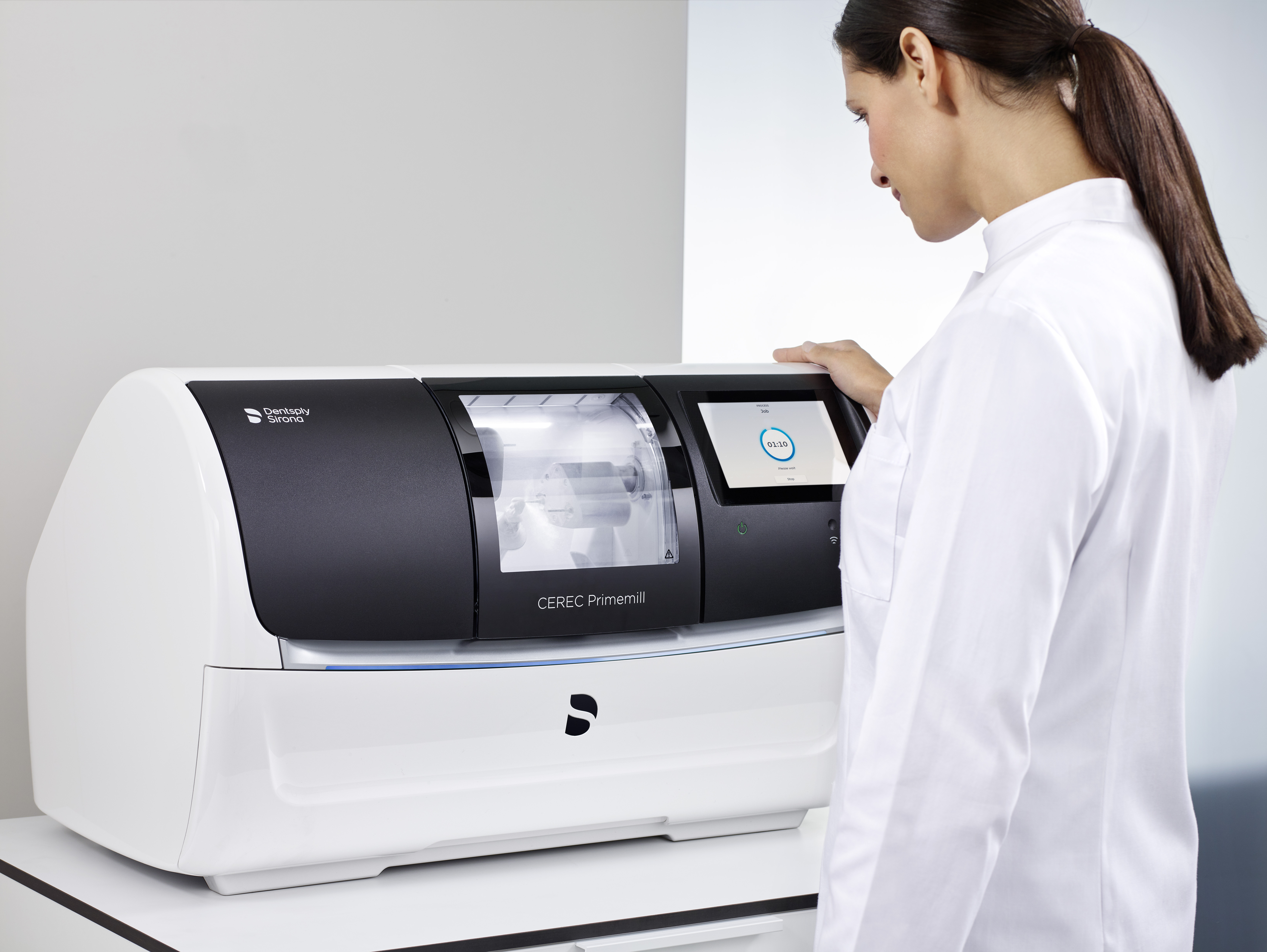Bizi arayın veya aşağıya iletişim bilgilerinizi girin, bir Dentsply Sirona temsilcisi en kısa zamanda sizinle iletişime geçecektir.
Contents:
- How does ergonimics impact treatment success?
- Application of ergonomics in dentistry
- What are the effects of bad posture?
- When is bad posture most likely to occur?
- The ideal posture for the dentist
- The ideal posture of the dental assistant
- Ideal patient positioning
- Shedding some light on design ergonomics
- Instrumentation tips to optimize dental ergonomics
- Ergonomic considerations when buying dental equipment
Think about your last treatment and how long your patient was in the chair. Now think about your posture and how aware you were of your body. The reality is that long days of back-to-back appointments take their toll on your body over time: dentists can spend as many as 60,000 hours per lifetime in tense and awkward positions. Good ergonomics in dentistry are crucial for treatment success and keeping you healthy so you can enjoy a full career.
Dentists are vulnerable to muscle imbalances, so you need to pay careful attention to ergonomics during work hours. Because the oral cavity is dark and narrow, accessing it can cause you to adopt unnatural positions as you bend over during treatment procedures. This can lead to physical impact and repetitive strain injuries. But of course, ergonomics in dentistry is about so much more than just posture: it’s also about how you interact with all the elements in your treatment environment.
Following dental ergonomic guidelines and investing in an ergonomic dental chair that embraces ergonomic design principles can compensate for the detrimental habits that contribute to pain and stress. This article highlights the importance of following good dental ergonomics in your work life, and how you can optimize and improve your workflow for better health.

How does ergonomics impact treatment success?
Ergonomics is a science focused on understanding how humans interact with the other elements in a system. In dentistry, this interaction is predominantly between the dentist, the dental assistant, and the treatment center within the greater system of the treatment environment. Good dental ergonomics is integral to treatment success and depends on simplifying fairly complex interactions within your professional system.
In dentistry, the goal of ergonomics is to find that delicate balance: between providing the best possible treatment and keeping you in optimal physical and mental health. Ultimately good ergonomics in dentistry can safeguard you against musculoskeletal disorders by helping you to adopt a natural and comfortable posture while you perform treatments.
Good ergonomic design in your treatment center helps you to:
- Work more efficiently and productively
- Avoid injury and illness
- Enjoy greater job satisfaction
Holding good posture throughout the workday reduces fatigue, reduces pain, and ensures you can deliver a higher quality of service to your patients.
Application of ergonomics in dentistry
Dental ergonomics has a very broad scope and applies to the entire treatment environment, including:
- The work postures of the dentist, dental assistant, and patient
- The posture and vision of the dentist through direct and indirect visualization, lighting, and magnification
- The accessibility and ease of use of examination, control, and working instruments, as well as software and equipment.
A flexible treatment environment and an ergonomically designed treatment center that adapts to your needs will help you to develop good working postures, as you interact with different types of patients, working practices, and procedures.
What are the effects of bad posture?
Bad posture takes its toll on your body over time and can increase your chances of developing musculoskeletal disorders. When looking at the top five causes of early retirement among dentists, musculoskeletal disorders account for nearly a third of cases:
- Musculoskeletal disorders 29.5%
- Cardiovascular disease 21.2%
- Neurotic symptoms 16.5%
- Tumors 7.6%
- Diseases of the nervous system 6.1%
Some examples of musculoskeletal disorders commonly experienced by dentists include upper and lower back pain, neck pain, and hand and wrist problems.
Ergonomics in dentistry: when is bad posture most likely to occur?
Unnatural posture: You will put more stress on your spinal discs if you lift, lower, or handle objects with a twisted or bent back - and of course, these effects are amplified if you are doing repetitive movements. Activities that require frequent or prolonged work above your shoulder height can cause stress in your body.
You are likely to experience unnatural positions if you are trying to:
- Coordinate a relative position to your dental assistant
- Get an optimal view of your patient’s oral cavity
- Move your patient into a comfortable position
- Move complex equipment or reach too far for your instruments.
Forceful exertions: Like tooth extractions, they put more strain on your tendons, ligaments, joints, and muscles. Performing these activities repetitively can cause fatigue if you don’t give yourself enough recovery time between them.
Treatment in perfect balance: the ideal posture for the dentist
Here are some general ergonomic tips to maintain good posture:
- Try to maintain an erect posture most of the time
- Alternate your working position between standing and sitting
- Correct any ergonomic problems in your treatment center
- Pay attention to your body throughout the day, taking care to minimize excessive wrist and finger movements
- Get professional help for any musculoskeletal disorders
- Strengthen your stabilizing muscles (your back and shoulders)
- Perform chairside stretching throughout the workday to avoid muscle imbalance and microtrauma
Moving around throughout the day promotes good ergonomics, as staying in one position for too long causes fatigue and can increase your risk of developing musculoskeletal problems.
Good posture guidelines for dentists
The FDI World Dental Federation recommends that oral health professionals follow these guidelines:
- Head: Your head should be inclined slightly forward and directed over your shoulders.
- Torso: Keep your torso in an upright position as this promotes the natural curvature of your spine. If necessary, adjust the backrest of your working stool for lumbar support.
- Arms, elbows, and shoulders: Allow gravity to pull your arms to your sides. Your shoulders are positioned over your hips and your forearms are in front of your body. Keep your wrists neutral and straight.
- Fingers: Your fingers are held at the treatment point and give you an unobstructed view of your procedure and patient.
The ideal seated posture and foot control position for the dentist
Adjust your seating height to knee height. When seated, your hips should be slightly higher than your knees. The dental stool should be tilted slightly downwards.
Your knees are slightly bent. Tilt your chair to lift your feet above the ground - this can alleviate pressure on your lumbar spine.
Your foot control should be positioned close to you so your knee is at a 100° angle. If it isn’t, it forces you to shift your weight to one side, causing asymmetrical stress to your back, and leading to lower back pain.
The ideal posture of the dental assistant
The dental assistant’s role is to support you to ensure more comfortable, less tiring, and more accurate treatment.
Some important considerations for your dental assistant’s ideal seating position include
- Your dental assistant should not interfere with you moving between 10 and 12 o’clock
- You should both be able to see the operating field clearly
- The dental assistant’s hand should extend easily into the oral cavity
- The instruments should be easy to hand over
The optimal seating position of the dental assistant
The ideal seating position for your dental assistant allows easy access and proximity to the patient. Your dental assistant should be seated so his or her eyes are 15 to 20 cm higher than yours. The dental assistant should have an ergonomic dental stool with foot support so he or she can work in and out of the oral cavity.
Sitting in this position reduces stressful postures and fatigue, and stabilizes suction. It also ensures proper hand-over of the instruments and exerts the least force on soft tissues during treatment.
Note: Left-handed dentists and dental assistants are at greater risk of musculoskeletal complications. Left-handed dental practitioners should use ambidextrous treatment centers.
Dental Ergonomics: Ideal patient positioning
You should choose a deliberate position for your patient in an ergonomic dental chair, based on your natural posture and reference point.
You can maintain a neutral posture by placing the patient in a supine position in the dental chair. The chair's height should be adjusted so your thighs can turn under the chair. Right-handed practitioners should ensure clearance around the patient’s head from 7 to 12.30 o’clock positions.
Balance direct and indirect visualization using your dental mirror so that you can maintain a balanced and upright posture.
Tips to get indirect views ergonomically:
- Rotate the patient’s head to the left or the right
- Change the angle of the maxillary occlusal plane
- Make adjustments by opening or closing the patient’s mouth
- Adjust the height of the oral cavity
Shedding some light on design ergonomics
Overhead lighting should produce illumination that is even, shadow-free, color-corrected and concentrated on the operating field. The light beam of your operating light should be perpendicular to the working mandibular plane or working maxilla plane.
Place the light source in the patient’s mid-sagittal plane so it is directly above and slightly behind your patient’s oral cavity and 5° toward the head of the operator in the 12 o’clock position. If you do this, you should not need to adjust the position during the procedure.
Instrumentation tips to optimize Dental Ergonomics
There is currently no best practice or industry standard for the design ergonomics of dental instruments. Constant flexion and extensions of your fingers and wrist can cause repetitive motion disorders. Holding your hand in the ‘pinch’ position for a long time appears to be the most detrimental and can contribute to common wrist and hand conditions like:
- Carpal Tunnel syndrome
- Trigger finger
- Tendinitis and tenosynovitis
- Guyon’s syndrome
- De Quervain’s disease
Here are some instrumentation tips to promote good ergonomics of the hands and wrists:
- Ensure that you don’t maintain awkward positions for extended periods and allow periods of rest
- Regulate the use of vibratory instruments
- Use round-handled instruments with hard edges instead of hexagonal handles to reduce digital nerve compression and muscular stress. Smooth, round-handled instruments need more pinch force to stop the handle from spinning in your hand
- Instruments that have handles with shallow grooves around the circumference generate more friction. This means it takes less force for you to get a secure grip on the instrument.
Preparation and placement of instruments without the 4-handed system
Your forearm has a limited range of natural movement. By preparing and placing your instruments strategically, you can reduce physical stress and improve concentration. You should be able to pick up and return basic instruments without looking away from your treatment area.
Preparation and placement of instruments with the four-handed system
Place all the necessary instruments within reach before the arrival of the patient.
Ergonomic considerations when buying dental equipment
Simplicity and intelligent design ergonomics should be at the fore when you invest in dental equipment. A treatment center that follows smart design principles promotes an efficient workflow that encourages good posture because it is easy to use.
Some key considerations:
- Your treatment environment is small so your treatment center needs to make efficient use of space. Smart Touch and wireless controls free your hands up so they can do what they were trained to.
- Digitally connected treatment centers support, streamline and optimize your workflow. They deliver everything you and your patient need during treatment.
- An ergonomic dental stool is a key element in your treatment environment. Dental stools that offer back support and adjustable heights ensure you are in the ideal posture for every treatment, avoiding muscle strain and straightening your spine. A dental stool with a saddle seat encourages a neutral pelvic position to promote a balanced posture.
- Dentsply Sirona’s operating lights ensure a very good light field with natural light, as well as contact-free handling, to promote good dental ergonomics. Plus, you can decide what works best for you with a choice of unit or ceiling models.
- Infection prevention is becoming increasingly important for dental treatment centers to protect the dentist, dental assistant, and patient. Features like foot controls, an integrated four-way foot switch, and an LED operating light with sensor touch are available with Dentsply Sirona’s treatment centers.
Achieving good ergonomics in dentistry starts with a flexible treatment center that supports good posture and clinical excellence. Dentsply Sirona’s dental chairs, working stools, and operating lights feature the latest in design ergonomics to protect the most important asset of the dental practice: the dentist. Digitally connected treatment centers are dedicated to supporting and streamlining your workflow, providing you and your patient with all the information you need during treatment.











